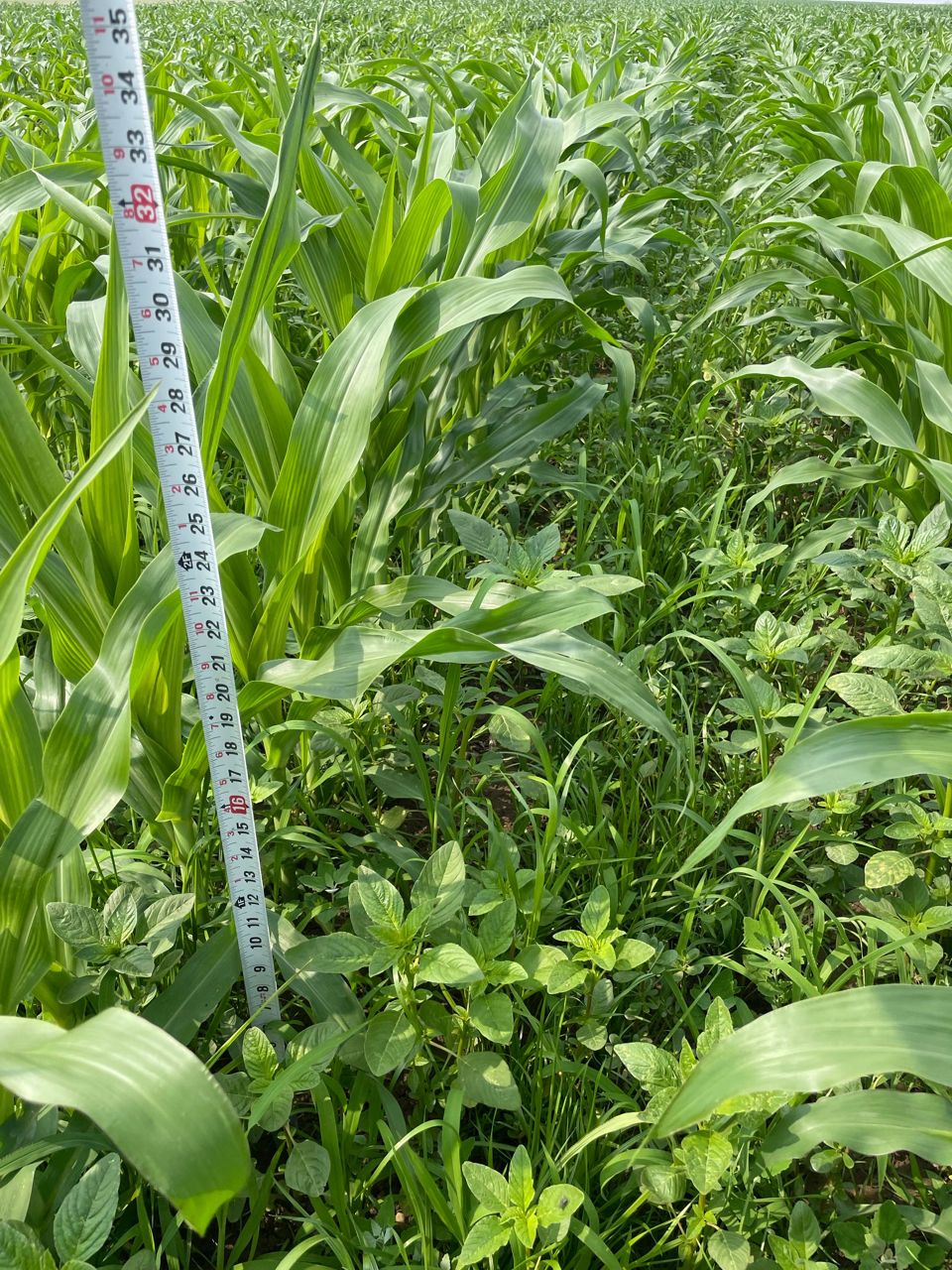Importance of Using a Residual Herbicide in Corn
April 1, 2024
Weed management remains a critical challenge in corn production, threatening crop yield potential and quality. To help combat this challenge effectively, a proactive approach to weed control is essential (Figure 1). Utilizing herbicide residual programs with multiple modes of action (MOA) has emerged as a highly effective strategy to help prevent weed emergence. This strategy can help farmers maintain clean and productive fields which can help optimize yield potential and profitability. This article delves into the importance of integrating various MOA in corn herbicide residual programs and emphasizes the benefits of preventing weed emergence.

One of the foremost threats to sustainable weed management is herbicide resistance. Overreliance on a single mode of action heightens the risk of resistance development in weed populations. To help mitigate this risk, integrating multiple MOA in herbicide programs is crucial. Rotating herbicide groups and employing mixtures or sequences of herbicides with different MOA are effective strategies for preserving herbicide efficacy and prolonging their utility in corn production. A cornerstone of effective weed management lies in combining multiple MOA in corn herbicide residual programs. By preventing weed emergence and employing diverse herbicide groups, farmers can help to maintain clean and productive fields while minimizing the risk of herbicide resistance.
Key Herbicide Modes of Action:
Photosystem II Inhibitors (Group 5):
Atrazine is the cornerstone herbicide in this group, widely employed in corn fields for controlling a range of broadleaf and some grass species. However, reports of atrazine resistance in certain weed species underscore the importance of judicious use. Factors such as soil characteristics and pH influence the effectiveness of atrazine. It is advisable to include atrazine in herbicide programs, especially when using HPPD-inhibitor and acetamide herbicides, unless specific circumstances dictate otherwise.
Very Long Chain Fatty Acid Inhibitors (Group 15):
Herbicides like acetochlor and S-metolachlor are effective against many annual grasses and small-seeded broadleaf weeds. However, they may exhibit reduced efficacy against certain weed species. These herbicides are often applied alongside atrazine to enhance effectiveness, particularly in fields with significant summer annual grass pressure.
HPPD-inhibitors (Group 27):
HPPD-inhibitors such as isoxaflutole and mesotrione provide excellent control of broadleaf weeds and grasses. When used with atrazine, their efficacy is enhanced, particularly against challenging weeds like kochia and pigweeds. However, soil conditions must be carefully considered, as some products may not be suitable for specific soil types. Utilizing full herbicide rates alongside a post-emergence program is essential for effective weed control, especially in the context of herbicide-resistant weeds.
PPO-inhibitors (Group 14):
Flumioxazin and saflufenacil are examples of PPO-inhibitors effective against pigweeds and certain broadleaf weeds. They offer varying degrees of residual activity, with some products providing shorter residual control. Supplementing with atrazine enhances control efficacy, although resistance concerns should be addressed. It's crucial to apply herbicides containing flumioxazin within the specified timeframe before corn planting for optimal results.
ALS-inhibitors (Group 2):
ALS-inhibitors like flumetsulam and rimsulfuron offer effective control of specific broadleaf weeds but may be less effective against others. They are often incorporated into herbicide blends for comprehensive weed control. However, the presence of ALS-resistant weeds can diminish their effectiveness. These herbicides are typically used as part of pre-emergence programs, complementing post-emergence strategies for holistic weed management.
Conclusion:
Effective weed management in corn production hinges on strategic herbicide usage from various groups while considering factors like weed species, soil conditions, and resistance management. By understanding the characteristics of each herbicide group and integrating them into comprehensive weed management plans, farmers can strive to optimize crop yield potential while minimizing the risk of herbicide resistance development. Multiple effective MOA are needed to control the toughest weeds in corn. Always consult herbicide labels for specific usage guidelines to ensure safe and effective application practices.
Channel Agronomist
Stetson Junek
Sources
Lancaster, S. 2023. Residual herbicides for corn. Agronomy eUpdates. Department of Agronomy. Kansas State University. https://eupdate.agronomy.ksu.edu/article_new/residual-herbicides-for-corn-535-1
Web site verified 2/8/24. 1110_360867